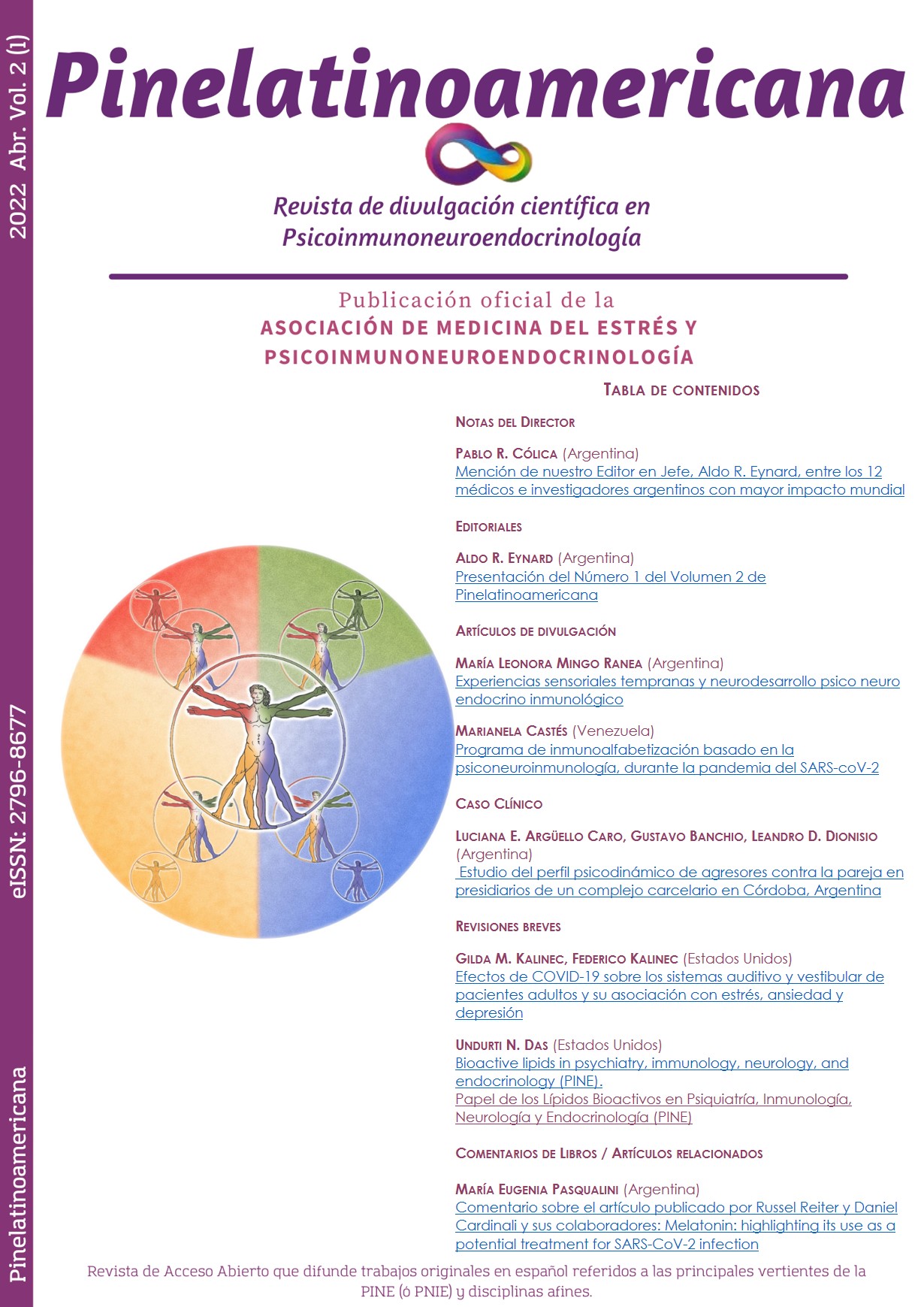Resumen
En el artículo objeto de este comentario, Reiter y col. realizan una revisión y una propuesta muy estimulante respecto a los mecanismos moleculares a través de los cuales la melatonina cumple un papel importante en los procesos inflamatorios que se desencadenan luego de infecciones virales o bacterianas que afectan el sistema respiratorio, como el que provoca la infección con el virus SARS-COVID-19.
Referencias
Amaral, F. G., y Cipolla-Neto, J. (2018). A brief review about melatonin, a pineal hormone. Archives of endocrinology and metabolism, 62(4), 472–479. https://doi.org/10.20945/2359-3997000000066
Arnao, M. B., y Hernández-Ruiz, J. (2018). The Potential of Phytomelatonin as a Nutraceutical. Molecules (Basel, Switzerland), 23(1), 238. https://doi.org/10.3390/molecules23010238
Bahrampour Juybari, K., Pourhanifeh, M. H., Hosseinzadeh, A., Hemati, K., y Mehrzadi, S. (2020). Melatonin potentials against viral infections including COVID-19: Current evidence and new findings. Virus research, 287, 198108. https://doi.org/10.1016/j.virusres.2020.198108
Cardinali, D. P., Esquifino, A. I., Srinivasan, V., y Pandi-Perumal, S. R. (2008). Melatonin and the immune system in aging. Neuroimmunomodulation, 15(4-6), 272–278. https://doi.org/10.1159/000156470
Dubocovich, M. L., y Markowska, M. (2005). Functional MT1 and MT2 melatonin receptors in mammals. Endocrine, 27(2), 101–110. https://doi.org/10.1385/ENDO:27:2:101
Garcia, C. P., Lamarque, A. L., Comba, A., Berra, M. A., Silva, R. A., Labuckas, D. O., Das, U. N., Eynard, A. R., y Pasqualini, M. E. (2015). Synergistic anti-tumor effects of melatonin and PUFAs from walnuts in a murine mammary adenocarcinoma model. Nutrition (Burbank, Los Angeles County, Calif.), 31(4), 570–577. https://doi.org/10.1016/j.nut.2014.06.001
Mauriz, J. L., Collado, P. S., Veneroso, C., Reiter, R. J., y González-Gallego, J. (2013). A review of the molecular aspects of melatonin's anti-inflammatory actions: recent insights and new perspectives. Journal of pineal research, 54(1), 1–14. https://doi.org/10.1111/j.1600-079X.2012.01014.x
Paredes, S. D., Korkmaz, A., Manchester, L. C., Tan, D. X., y Reiter, R. J. (2009). Phytomelatonin: a review. Journal of experimental botany, 60(1), 57–69. https://doi.org/10.1093/jxb/ern284
Radogna, F., Sestili, P., Martinelli, C., Paolillo, M., Paternoster, L., Albertini, M. C., Accorsi, A., Gualandi, G., y Ghibelli, L. (2009). Lipoxygenase-mediated pro-radical effect of melatonin via stimulation of arachidonic acid metabolism. Toxicology and applied pharmacology, 238(2), 170–177. https://doi.org/10.1016/j.taap.2009.05.011
Reiter, R. J., Tan, D. X., Manchester, L. C., Pilar Terron, M., Flores, L. J., y Koppisepi, S. (2007). Medical implications of melatonin: receptor-mediated and receptor-independent actions. Advances in medical sciences, 52, 11–28.
Tamura, H., Takasaki, A., Taketani, T., Tanabe, M., Kizuka, F., Lee, L., Tamura, I., Maekawa, R., Aasada, H., Yamagata, Y., y Sugino, N. (2012). The role of melatonin as an antioxidant in the follicle. Journal of ovarian research, 5, 5. https://doi.org/10.1186/1757-2215-5-5
Zhang, R., Wang, X., Ni, L., Di, X., Ma, B., Niu, S., Liu, C., y Reiter, R. J. (2020). COVID-19: Melatonin as a potential adjuvant treatment. Life sciences, 250, 117583. https://doi.org/10.1016/j.lfs.2020.117583

Esta obra está bajo una licencia internacional Creative Commons Atribución-NoComercial 4.0.
Derechos de autor 2022 Pinelatinoamericana


